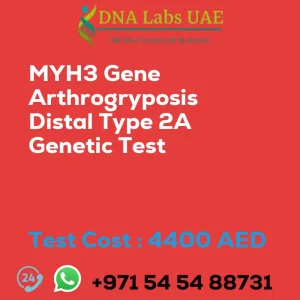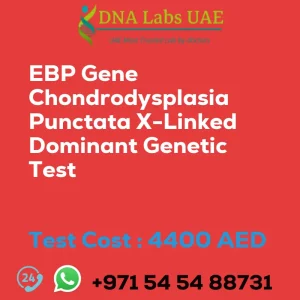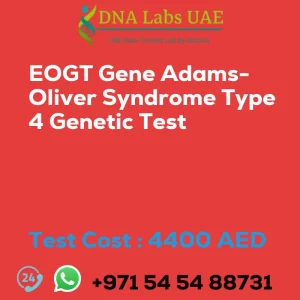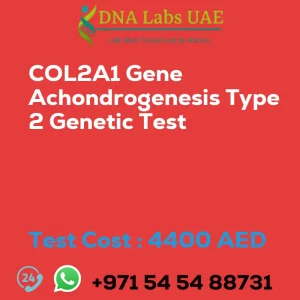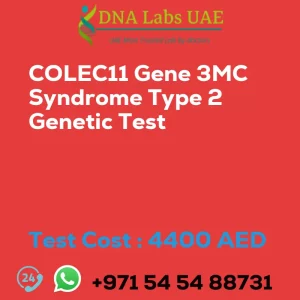FLNB Gene Atelosteogenesis type 3 Genetic Test
Test Name: FLNB Gene Atelosteogenesis type 3 Genetic Test
Components: Blood or Extracted DNA or One drop Blood on FTA Card
Price: 4400.0 AED
Report Delivery: 3 to 4 Weeks
Method: NGS Technology
Test Type: Osteology Dermatology Immunology Disorders
Doctor: Dermatologist
Test Department: Genetics
Pre Test Information: Clinical History of Patient who is going for FLNB Gene Atelosteogenesis type 3 NGS Genetic DNA Test. A Genetic Counselling session to draw a pedigree chart of family members affected with FLNB Gene Atelosteogenesis type 3 NGS Genetic DNA Test gene FLNB
Test Details
The FLNB gene is responsible for producing a protein called filamin B, which plays a crucial role in the development and maintenance of the skeletal system. Mutations in the FLNB gene can lead to various skeletal disorders, including atelosteogenesis type 3.
Atelosteogenesis type 3 is a rare genetic disorder characterized by severe skeletal abnormalities. Individuals with this condition typically have short limbs, joint dislocations, and a narrow chest. They may also have additional features such as a cleft palate and respiratory difficulties.
NGS (Next-Generation Sequencing) genetic testing is a type of DNA sequencing technology that allows for the simultaneous analysis of multiple genes or the entire genome. It can be used to identify mutations in the FLNB gene associated with atelosteogenesis type 3.
NGS genetic testing involves collecting a DNA sample, usually through a blood sample or a cheek swab. The DNA is then sequenced using NGS technology to identify any mutations or variations in the FLNB gene. The results of the test can help confirm a diagnosis of atelosteogenesis type 3 and provide information about the specific mutation(s) present.
Genetic testing can be helpful for individuals with suspected atelosteogenesis type 3 and their families. It can provide a definitive diagnosis, guide treatment decisions, and offer information about the risk of passing the condition on to future generations. Genetic counseling is often recommended before and after genetic testing to discuss the implications of the results and provide support.
| Test Name | FLNB Gene Atelosteogenesis type 3 Genetic Test |
|---|---|
| Components | |
| Price | 4400.0 AED |
| Sample Condition | Blood or Extracted DNA or One drop Blood on FTA Card |
| Report Delivery | 3 to 4 Weeks |
| Method | NGS Technology |
| Test type | Osteology Dermatology Immunology Disorders |
| Doctor | Dermatologist |
| Test Department: | Genetics |
| Pre Test Information | Clinical History of Patient who is going for FLNB Gene Atelosteogenesis type 3 NGS Genetic DNA Test. A Genetic Counselling session to draw a pedigree chart of family members affected with FLNB Gene Atelosteogenesis type 3 NGS Genetic DNA Test gene FLNB |
| Test Details |
The FLNB gene is responsible for producing a protein called filamin B, which plays a crucial role in the development and maintenance of the skeletal system. Mutations in the FLNB gene can lead to various skeletal disorders, including atelosteogenesis type 3. Atelosteogenesis type 3 is a rare genetic disorder characterized by severe skeletal abnormalities. Individuals with this condition typically have short limbs, joint dislocations, and a narrow chest. They may also have additional features such as a cleft palate and respiratory difficulties. NGS (Next-Generation Sequencing) genetic testing is a type of DNA sequencing technology that allows for the simultaneous analysis of multiple genes or the entire genome. It can be used to identify mutations in the FLNB gene associated with atelosteogenesis type 3. NGS genetic testing involves collecting a DNA sample, usually through a blood sample or a cheek swab. The DNA is then sequenced using NGS technology to identify any mutations or variations in the FLNB gene. The results of the test can help confirm a diagnosis of atelosteogenesis type 3 and provide information about the specific mutation(s) present. Genetic testing can be helpful for individuals with suspected atelosteogenesis type 3 and their families. It can provide a definitive diagnosis, guide treatment decisions, and offer information about the risk of passing the condition on to future generations. Genetic counseling is often recommended before and after genetic testing to discuss the implications of the results and provide support. |


